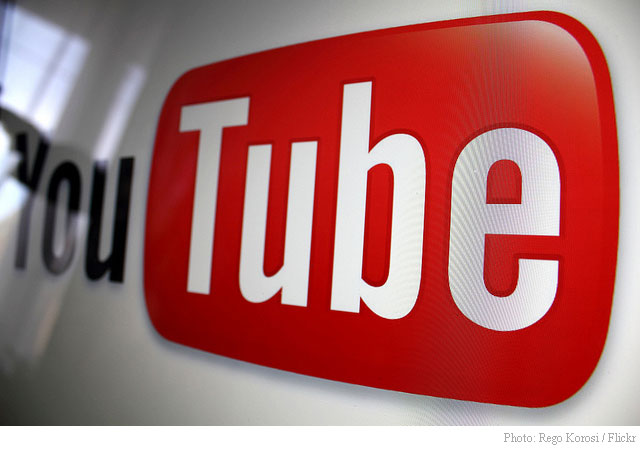
When you pay your cable bill, you effectively pay for two things: content and delivery.
For instance, I currently pay Comcast (CMCSA), as many other Americans do; it’s the largest cable company in the United States. Comcast has to pay for the content it delivers to me, with the exception of its own NBC products. The company passes these costs, along with the cost of delivery, on to me.
Cable companies have traditionally done very well because of their complete control of the delivery aspect of the transaction. Even if they have to pay for content, cable companies long relied on the fact that content creators like HBO had to go through them in order to reach viewers. Until recently, there was no other choice. Networks have, however, historically fought hard to increase their licensing fees, a struggle which has mainly resulted in ever-rising cable subscription costs.
Streaming video has begun push the boundaries of this arrangement in recent years. Now Google is poised to disrupt the cable model outright.
Taking a cue from streaming services such as Netflix (NFLX) and Hulu, Google (GOOG) has announced plans to offer a subscriber version of YouTube, which is currently supported entirely by advertising. The new paid model would not replace ads, but would allow users to pay a fee to avoid them. Google has said it will share subscription revenue with video creators.
At its simplest, a premium YouTube service is to video what Google News was to news and information. Someone else spends the money to create content. Google then assembles that content and helps customers find it, while selling advertising around the content that cost Google nothing to create. The value Google adds comes through promotion and distribution. Google shares a piece of the resulting ad revenue with content creators at a rate set, conveniently enough, by Google.
This model is primed to work as well for video as it does for information, with the added benefit that viewers annoyed by ads may be willing to pay for ad-free content outright – at least, this is the hope behind the proposed subscription service. The only missing link, from Google’s perspective, is that Google still depends on someone else – like Comcast, for example – to deliver its content to the viewer by providing Internet service.
But Google is taking care of that, too, at least in some markets, by introducing its own broadband service, Google Fiber. While Google Fiber is only available in three major metro areas currently, plans to expand to five more are already underway and an additional four are under discussion.
I think we are seeing the start of a war between Google and the cable companies, especially Comcast. Google is one of the very few companies with both the resources to really build out its own broadband network from scratch and the motivation to spend time and money doing so. If Google can deliver its content to customers faster and more cheaply than Comcast, Google has every reason to make that happen.
Moreover, Comcast currently pays for nearly all the content it delivers. Google will have a set of content from YouTube for which it doesn’t pay, except for a share of the ad revenue it feeds back to creators. This library of content will subsidize Google’s purchase of content from name-brand providers. The excitement surrounding HBO Now, which will let viewers buy streaming access to HBO programs without paying for the cable channel, shows content producers are increasingly willing to reposition themselves to appeal to viewers who prefer a streaming experience.
Google would, no doubt, be thrilled to attract more users to its broadband service by offering standalone HBO packages. Unbundling subscriptions may not ultimately save consumers money, because each channel will be expensive on a standalone basis. Already, viewers increasingly must consider which channels are available through which online service when deciding whether opting out of cable is worthwhile. But unbundling may go even further. Google may follow the model set up by Apple’s iTunes Store, in which users are allowed to buy shows episode by episode if they prefer, paying only for what they watch. Google Play already offers this model for some shows; if it gains traction, Google may put more effort into expanding its offerings.
Like Google, content providers like HBO have good reason to try to sidestep Comcast and other cable companies. They want to expand their audience, and viewers are increasingly unwilling to buy Comcast’s expensive TV and Internet bundles. As the cable industry continues consolidating in pursuit of economies of scale, customers have expressed dissatisfaction with what they get compared to what they pay.
Cable companies do not only face competition with Google. Another potential threat comes from wireless providers. AT&T (T), Verizon (VZ) and their smaller brethren are already spending billions of dollars to upgrade their networks, and they are often the content delivery providers of choice for cable cord-cutters. Right now, wireless broadband is frequently too slow and expensive for high quality video streaming. But given sufficient time and spectrum, wireless providers – along with Google – may finally apply enough pressure to break the cable monopoly model.
Cable isn’t dead. But as the advent of Google Fiber, subscription YouTube and HBO Now indicates, it may be past its prime.
Disclaimer: This page contains affiliate links. If you choose to make a purchase after clicking a link, we may receive a commission at no additional cost to you. Thank you for your support!



Leave a Reply